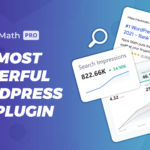In today’s digital landscape, e-commerce websites are in a constant battle for visibility and growth. With a myriad of competitors vying for the attention of potential customers, it’s crucial to stand out in the crowded online marketplace. But how can you ensure your online store rises above the competition? The answer lies in a well-executed SEO strategy, specifically focusing on SEO for e-commerce websites. In this comprehensive guide, we’ll explore the ins and outs of e-commerce SEO, from keyword research and site architecture to technical SEO and content marketing. By the end of this journey, you’ll be equipped with the knowledge and tools to elevate your e-commerce website to new heights of success.
Key Takeaways
Optimize your e-commerce website with SEO strategies to gain visibility and success.
Leverage keyword research tools, optimize site architecture, and create engaging content for improved performance in SERPs.
Monitor website performance regularly using Google Analytics or Ahrefs/SEMrush to identify growth opportunities & refine SEO strategy.
The Importance of SEO for E-commerce Websites

E-commerce websites significantly benefit from ecommerce SEO. Improving visibility, attracting organic traffic, and gaining an edge in search engine results pages (SERPs) are all results of a robust ecommerce SEO campaign that can elevate your online store.
One of the first foundational steps for e-commerce SEO is optimizing site architecture, which enhances user experience and search engine crawling. Other important steps include:
Conducting keyword research
Implementing on-page SEO
Focusing on technical SEO
Creating engaging content
Tackling duplicate content issues
These strategies contribute to the success of your e-commerce site and help improve its SEO performance.
As more and more consumers turn to search engines to find products and services, it’s essential for e-commerce websites to stay ahead of the curve. By implementing a comprehensive ecommerce SEO strategy, you can ensure your online store is visible, user-friendly, and primed for success.
Organic Traffic Growth

Organic traffic growth is invaluable for e-commerce success. By reducing reliance on paid advertising and increasing the likelihood of higher conversions, your website can thrive in the competitive online marketplace. Moreover, optimized URLs can provide a competitive advantage and drive more traffic, while placing primary keywords in the URL can boost search rankings.
Emphasizing organic traffic growth can help your e-commerce website draw in a larger audience, engage potential customers and boost revenue. Combined with optimization of technical aspects and a comprehensive SEO strategy, your path to e-commerce success becomes clear.
Competition in SERPs
E-commerce websites are in constant competition with numerous other sites in SERPs. To outshine the competition, it’s vital to have a comprehensive marketing strategy that includes SEO. Analyzing competitors’ keywords using tools like SEMrush’s Organic Research tool can provide valuable insights and help you uncover keywords they already rank for.
Meanwhile, the Backlink Gap tool helps identify potential opportunities to build backlinks by analyzing your competitors’ backlink profiles and generating a list of sites that link to them but not to you.
With diligent research and strategic planning, your ecommerce website can outpace competitors, especially other ecommerce websites, rise to the top of SERPs, draw more customers, and achieve remarkable success.
E-commerce Keyword Research

Keyword research is pivotal in e-commerce SEO. Targeting relevant, high-converting search terms can help attract the right audience to your website, thereby maximizing its potential for success. A well-executed keyword research strategy can help you identify your target keyword and:
Include beneficial keywords in your site’s content, meta descriptions, and other on-page elements
Boost search engine visibility
Drive more traffic to your site
Different types of keywords can serve different purposes for your e-commerce website. For example, informational keywords are great for providing helpful content and attracting a large amount of traffic with potential to convert, while commercial keywords indicate buying intent and are more beneficial for e-commerce sites. Understanding and targeting the right keywords for your website can help your e-commerce SEO campaign drive more relevant traffic and achieve considerable success.
Short-Tail vs. Long-Tail Keywords
When it comes to e-commerce SEO, understanding the difference between short-tail and long-tail keywords is crucial. Short-tail keywords are great for driving more traffic but are highly competitive, while long-tail keywords have lower competition and higher conversion rates. Long-tail keywords tend to convert remarkably better than shorter terms, as they are more specific and have lower competition.
In conclusion, while short-tail keywords drive more traffic, long-tail keywords have the potential to bring even more success. Targeting a combination of both short and long-tail keywords can enhance your e-commerce website’s visibility and bring more relevant traffic to your site.
Keyword Research Tools
Utilizing keyword research tools such as Google Keyword Planner, SEMrush, and Ahrefs can help you identify valuable keywords for your e-commerce website. These tools provide insights into search volume, competition, and other essential metrics for ecommerce keyword research, enabling you to make informed decisions about the best keywords to target.
Utilizing these keyword research tools and honing your keyword strategy can enhance your e-commerce website’s search engine visibility, draw more organic traffic, and pave the way for greater success in the competitive online marketplace.
Optimizing Site Architecture

Optimizing site architecture is essential for improving user experience and search engine crawling, ultimately boosting your e-commerce website’s SEO performance. A well-structured site can lead to:
Higher conversions
Better user engagement
More intuitive and user-friendly online store
Increased visitor engagement
Repeat visits
Concentrating on site architecture allows you to develop a more intuitive and user-friendly online store, which keeps visitors engaged and encourages repeat visits.
Two golden rules of ecommerce site architecture are to keep things simple and efficient, and to ensure every page is easily accessible within three clicks from your homepage. Adherence to these principles and enhancement of your site’s structure can boost user experience, improve search engine rankings, and pave the way for success in the competitive world of ecommerce sites.
Flat vs. Deep Site Structure
Flat site structures are preferred for e-commerce websites because they:
Allow users and search engines to access pages more easily
Organize pages in a way that minimizes the number of clicks required to reach any given page
Make it easier for both users and search engines to navigate and index the site
On the other hand, deep site structures require multiple clicks to reach product and category pages, and adding a product or category page requires deeper navigation, which can hinder user experience and search engine crawling.
Implementing a flat site structure can enhance your e-commerce website’s user experience, search engine rankings, and overall performance, laying the groundwork for significant success in the competitive online marketplace.
Breadcrumbs and Navigation
Breadcrumbs and clear navigation menus play a crucial role in enhancing user experience and improving your e-commerce website’s site structure. Breadcrumbs are a secondary navigation scheme that reveals the user’s location on a website, providing an intuitive way for users to navigate through the site.
Clear navigation menus make it easy for users to find the information they need, improving overall user satisfaction. Implementing breadcrumbs and clear navigation menus can refine your e-commerce website’s site structure and user experience, thus bolstering your online store’s success in the competitive e-commerce arena.
Technical SEO for E-commerce

Technical SEO is vital for e-commerce websites to ensure optimal site performance and search engine compatibility. Addressing technical issues can bolster your website’s visibility, user experience, and overall performance. Some common SEO improvements that can be identified during a site audit include optimizing title and/or description tags, enriching content, and fixing broken links.
Focusing on technical SEO can have a significant impact on your e-commerce website’s success. Here are some key areas to optimize:
Make sure your website loads swiftly to deliver a fantastic user experience.
Ensure Your Website Shines on Any Device to Serve the Expanding Mobile Audience.
Handling duplicate content: Avoid duplicate content issues by implementing canonical tags and using 301 redirects. By implementing a comprehensive technical SEO strategy, you can prime your online store for success in the competitive e-commerce landscape.
Site Speed Optimization
Site speed optimization is crucial for enhancing user experience and improving search engine rankings. A fast-loading website keeps users engaged and encourages them to explore more of your site, ultimately increasing the likelihood of conversions. To optimize your e-commerce website’s site speed, you can implement various techniques and strategies such as:
Minifying code
Compressing images
Leveraging browser caching
Optimizing server response times
Focusing on site speed optimization can enhance the user experience on your e-commerce website, leading to higher search engine rankings, increased traffic, and significant success in the competitive online marketplace.
Mobile Responsiveness
Ensuring your e-commerce website is mobile-responsive is vital in today’s increasingly mobile world. With over 60% of Google searches performed on a mobile device by the end of 2021, it’s crucial for your website to cater to this growing user base. By optimizing your website for mobile devices, you can provide a seamless user experience across various screen sizes and resolutions, ultimately improving your website’s SEO performance.
Emphasizing mobile responsiveness ensures your e-commerce website remains accessible and user-friendly for all visitors across various devices. This can lead to increased engagement, higher search engine rankings, and ultimately greater success in the competitive world of e-commerce.
Handling Duplicate Content
Duplicate content can harm your e-commerce website’s search engine rankings and overall SEO performance. By addressing duplicate content issues, you can maintain a unique, high-quality website that appeals to both users and search engines. To effectively manage duplicate content, you can remove or consolidate duplicate pages, implement canonical tags, and use unique page titles and meta descriptions.
Addressing duplicate content issues directly helps maintain the uniqueness and quality of your e-commerce website, priming it for success in the competitive online marketplace.
On-Page SEO for E-commerce
On-page SEO is essential for e-commerce websites to optimize individual pages for targeted keywords and improve search engine rankings. By focusing on key on-page elements such as title tags, meta descriptions, and product descriptions, you can enhance your website’s search engine visibility and drive more traffic to your site.
Optimizing your e-commerce website’s on-page SEO enhances its visibility, user-friendliness, and sets it up for success. This can lead to increased engagement, higher search engine rankings, and ultimately greater success in the competitive world of e-commerce.
Title Tags and Meta Descriptions
Crafting compelling title tags and meta descriptions is an essential aspect of on-page SEO for e-commerce websites. These elements provide concise information about your pages in search engine results, making it easier for users to find the content they need. By optimizing your title tags and meta descriptions, you can boost click-through rates from search engine results, enhance search engine rankings, and make it simpler for users to find the content they need.
To craft compelling title tags and meta descriptions, be sure to include relevant keywords, keep the length within the recommended character limits, and ensure the content is engaging and informative. By implementing these best practices, you can improve your e-commerce website’s search engine performance and attract more potential customers.
Product Descriptions

Writing engaging, informative product descriptions is crucial for the success of your e-commerce website. By incorporating targeted keywords and addressing user intent, you can craft product descriptions that appeal to your target audience and support your e-commerce goals.
To create compelling product descriptions, focus on the following:
Highlight the features and benefits of the product
Consider the needs and preferences of your target audience
Use language that is easy to understand and engaging
Include relevant keywords for optimal optimization
By following these guidelines, you can create product descriptions that effectively showcase your products and drive conversions on your e-commerce website.
By crafting engaging product descriptions, you can showcase your products effectively, provide valuable information to potential customers, and ultimately increase conversions and sales.
Image Optimization
Optimizing images is an important aspect of e-commerce SEO, as it can improve user experience, search engine rankings, and overall site performance. By using descriptive file names, alt tags, and proper formatting, you can ensure your images are optimized for both users and search engines.
Some tips for optimizing images include:
Using descriptive file names that include relevant keywords
Adding alt tags that accurately describe the image and include keywords
Compressing images to reduce file size and improve loading speed
Using the appropriate image format (JPEG for photographs, PNG for graphics)
Alt tags provide another opportunity to include your keyword on the page and increase your chances of appearing in Google image results. Additionally, using tools like Google Search Console can help you monitor and optimize your website’s performance in search results, as well as discover valuable keyword ideas.
By implementing image optimization best practices, you can enhance your e-commerce website’s SEO performance, improve user experience, and ultimately achieve greater success in the competitive online marketplace.
Content Marketing and Blogging
Content marketing and blogging can play a pivotal role in enhancing your e-commerce website’s SEO performance. By providing valuable information, promoting products, and attracting backlinks, content marketing and blogging can help drive more traffic, boost domain authority, and improve search engine rankings.
A comprehensive content marketing and blogging strategy can boost the visibility and user-friendliness of your e-commerce website, setting it up for success. This can lead to increased engagement, higher search engine rankings, and ultimately greater success in the competitive world of e-commerce.
Creating Engaging Content

Creating engaging, high-quality content is essential for the success of your e-commerce website. By crafting content that appeals to your target audience and supports your e-commerce goals, you can attract more potential customers, improve search engine rankings, and ultimately achieve greater success in the competitive online marketplace.
To create engaging content, focus on:
Writing for the user
Sharing genuine and truthful content
Adding visuals
Narrating a story
Offering actionable information
By implementing these best practices, you can create content that resonates with your audience and drives more traffic to your site.
Leveraging Video Content
Leveraging video content can be a powerful way to increase user engagement, improve SEO performance, and showcase your products effectively. By incorporating high-quality visuals, keeping videos short and to the point, and maintaining a consistent style, you can create compelling video content that resonates with your target audience and drives more traffic to your site.
By using video content in your e-commerce marketing strategy, you can attract more potential customers, improve search engine rankings, and ultimately achieve greater success in the competitive online marketplace.
Link Building Strategies
Implementing link building strategies is essential for improving your e-commerce website’s authority, search engine rankings, and overall SEO performance. By focusing on techniques such as guest posting, resource pages, and broken link building, you can acquire valuable backlinks and boost your online store’s visibility.
Employing a variety of link building strategies can boost the authority and search engine rankings of your e-commerce website, driving more traffic and paving the way for success in the competitive online marketplace.
Guest Posting

Guest posting is an effective way to build relationships, gain exposure, and acquire valuable backlinks for your e-commerce website. By contributing valuable content to other websites and blogs, you can expand your reach and improve your website’s overall SEO performance.
By proactively reaching out to relevant websites and blogs and offering to contribute guest posts, you can foster relationships, gain visibility, and acquire valuable backlinks that will enhance your e-commerce website’s search engine rankings and overall success.
Resource Pages and Broken Link Building
Resource pages and broken link building are effective techniques for identifying link opportunities and improving your e-commerce website’s backlink profile. Resource pages are static pages on websites that curate different resources on specific topics and provide helpful internal links to the original sources.
Unlocking Opportunities with Broken Link Building: Boost Your Website’s Authority by Replacing Broken Links with Your Own!” 🚀
By utilizing resource pages and broken link building techniques, you can identify link opportunities, acquire valuable backlinks, and improve your website’s overall SEO performance and search engine rankings.
Measuring E-commerce SEO Success
Measuring e-commerce SEO success is essential for tracking progress, identifying areas for improvement, and refining your strategy. By using analytics tools and performance metrics, you can:
Monitor your website’s performance
Track changes in organic traffic
Track changes in keyword rankings
Analyze other SEO metrics over time
By monitoring these metrics, you can optimize your strategy accordingly.
Regular performance monitoring of your e-commerce website using analytics tools and performance metrics helps identify growth opportunities, refine your SEO strategy, and achieve significant success in the competitive online marketplace.
Google Analytics

Google Analytics is a powerful tool that tracks and reports website traffic. By using Google Analytics, you can:
Monitor organic traffic
Track user engagement
Analyze key performance indicators
Gain invaluable insights into your e-commerce website’s performance.
Leveraging the data and insights from Google Analytics can help you:
Uncover areas for improvement
Enhance your e-commerce website’s search engine visibility
Pave the way for significant success in the competitive online marketplace.
Ahrefs and SEMrush
Ahrefs and SEMrush are powerful SEO tools that can help you track keyword rankings, backlink profiles, and competitor performance. By employing these tools, you can gain valuable insights into your e-commerce website’s performance, identify opportunities for growth, and optimize your SEO strategy.
Utilizing ecommerce seo tools like Ahrefs and SEMrush can help you outpace the competition, improve your e-commerce website’s search engine visibility, and set the stage for considerable success in the competitive online marketplace.
Summary
In conclusion, e-commerce SEO is an integral component of any successful online store. By focusing on key aspects such as keyword research, site architecture, technical SEO, content marketing, and link building, you can optimize your e-commerce website for better search engine visibility, attract more organic traffic, and achieve greater success in the competitive online marketplace. Remember, the journey to e-commerce success is ongoing – so keep refining your strategy, learning from your data, and striving for improvement.
🚀 Ready to Transform Your Digital Product Game?
Join Our “How to Market and Sell Digital Products” Class Today and Unleash Your Potential! 💡 Don’t Miss Out on Your Chance to Master the Art of Digital Sales, Even If You’re a Beginner. Secure Your Spot Now and Start Your Journey to Success! 🌟📈
👇👇👇
How to Market and Sell Digital Products Free Class
👆👆👆
Frequently Asked Questions
What is SEO for e commerce?
E-commerce SEO is a marketing technique used to get more traffic to your store by optimizing it for higher visibility on search engine result pages. This includes writing product descriptions with relevant keywords, improving performance of product and category pages, and appearing in SERP features. When done right, it can significantly reduce the cost of traffic while increasing sales.
How can I do SEO for eCommerce website?
To do SEO for an eCommerce website, focus on keyword research, optimizing product pages, reducing page loading speed, using a simple URL structure, and creating backlinks. Additionally, use Schema markups to help Google understand content and avoid duplicate content and pages.
Is SEO worth it for eCommerce?
SEO is worth it for ecommerce, as it can increase organic traffic and improve search engine rankings, making it easier for potential customers to discover your online store. Moving up one spot in the search results will increase CTR by 30.8 percent, making it one of the most effective strategies to outrank competitors.
What is the difference between SEO and eCommerce SEO?
eCommerce SEO is specialized for optimizing online stores to improve sales, while traditional SEO focuses on increasing website visibility to attract visitors and build brand recognition.
How can I optimize my e-commerce website for mobile responsiveness?
Optimize your website for mobile responsiveness by using a responsive design approach, optimizing images, and adjusting the layout and content to work with various screen sizes and resolutions.










